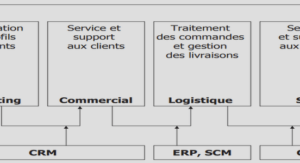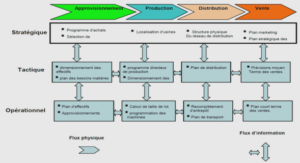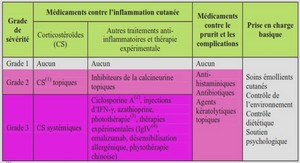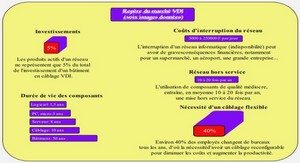Reports and analyses of the interviews
Interview 1: The result of the first question of questionnaire 1 has informed us that 2 out of the 44 lycée teacher respondents do not include question tags in their teaching, despite the fact that the structure is part and parcel of the official syllabuses. One of them could explain later on, in the same questionnaire, the reason for this exclusion, stating that time constraints do not allow the teaching of the “little and unimportant grammar structures” that are question tags. Yet, we could contact the other teacher and ask for an interview to find out his/her arguments. Hence, the first selected interviewee is a teacher among the respondents of questionnaire 1. The aim of this first interview is to find out the reason why the respondent in question does not include question tags in his/her teaching. The questions that were asked during the interview were, then, all leading to this aim. These questions concern the classes that the interviewee is teaching, the timetable, and the teacher’s argument for not teaching question tags. As a matter of fact, the outcome of this first interview has informed us that the interviewee does not teach Seconde students, but only Première and Terminale ones. This teacher works for 12 hours a week, having four classes and 3 hours a week for each class. This timetable correlates with what is suggested by the official syllabuses. Moreover, even though question tags are part of the Première lycée syllabus, the interviewee does not teach the structure because of a special regulation existing in the educational establishment where he/she works. This regulation concerns the standard quarterly distributions of the Première syllabus that each teacher has to follow during the school year, and the interviewee agreed to give us a copy of it (See Appendix 10: Annual distribution of the Première syllabus / Lycée X). The title “question tags” could not be found anywhere in this document, that has been elaborated according to an agreement made by all the English teachers in the school known as “Equipe pédagogique: Anglais” 65. This conducts us to the conclusion that several lycée teachers think the reinforcement of “question tags” in Première is not imperative. This is mainly due to the fact that the syllabus is very long, and time constraints do not allow teachers 65“Equipe pédagogique”is the name given to the team of all the teachers of a specific subject in a lycée. 95 to spend time on reinforcing some grammar points. Apart from that, the same teacher stated that Terminale students do not deal with question tags in this school as the Terminale syllabus does not stipulate that. The questionnaire meant for teachers of English, especially its fourth question, has communicated to us that half of the teachers (21/42) resort to didactic materials to support their teaching of question tags. These materials are either of visual or audio or of audio-visual types. Only 2 out of the 21 teachers, however, have opted for audio- visual aids including television, computer, or internet. As a result, these teachers meet the specific criterion we require from the respondent of the following survey through interviews.
Interview 2
The respondent of this second interview is a teacher of English who uses audio- visual aids in his/her teaching of question tags. The purpose of the interview is to find out the way in which the respondent proceeds with the teaching of question tags with audio-visual aids. The questions that were asked were, therefore, related to the respondent’s teaching procedures. The second interview has revealed that the interviewee resorts to a website known as “nonstopenglish.com” to practise every new grammar lesson introduced in class. As a matter of fact, the respondent explained to us that the school where s/he works has internet access that is available for teachers and students to use. Each class this respondent teaches benefits from one-hour internet connexion a week for doing online grammar exercises. The following paragraph will bring further information about the website. Nonstopenglish.com is a free English as a Second language (ESL) and English as a Foreign Language (EFL) activity website (cf Appendix 11: Homepage of the website). It is an online interactive language course. In addition to that, English grammar and vocabulary skills can be practised with online interactive tests and exercises on this free website. There are many English grammar tests, and English vocabulary tests can help learners to build their vocabulary and their understanding of the English language. If the learner registers, he/she can receive free motivating email exercises and can see which exercises he/she has done and how well. All exercises are self-checked and the 96 alternative exercise levels include beginner, elementary, pre-intermediate, lower intermediate, upper intermediate, advanced, proficiency, and unspecified level. Learners can test their knowledge and study everyday English with self-evaluation tests. New English grammar tests are added every week. Keys to self-check the learner’s scores and to see what alternative answers, if any, are possible. The respondent could enumerate the different steps s/he follows each time s/he deals with a grammatical structure, including question tags. First, s/he introduces the grammar lesson in class, afterwards during the one-hour session allotted to I.C.T.66, asks the students to connect to the website in question (http//www.nonstopenglish.com/). As the teacher has chosen and prepared the exercises to be done in advance , s/he just instructs the students to select the drills on the homepage of the website (See Appendix 11). The interviewee explained that his/her role is, then, to monitor or guide the students. The second interview has, by the way, presented the opportunity to ascertain the advantages and disadvanges of using computers in English language teaching. The respondent quoted for example that the students were very motivated when they are asked to work on computers. Moreover, the teacher added that: “students will often do on a computer what they are reluctant to do in their exercise books”. Nonetheless, when networks or lines are busy due to many users, it may take time to access information. This can lead both the teacher and learners to frustration. Another problem the teacher has pointed out when implementing such a technology in teaching is that there are not enough machines in the institution. Indeed, there 20 available computers, yet the number of students belonging to each class is 50 on average (1 computer for 2 or 3 students). As a result, individualised learning is not possible in such a case as the students have to cooperate when doing the drills.
Interview 3
The respondent of the third interview was among the teachers who answered the first questionnaire. This respondent affirmed that s/he implements audio-visual aids when teaching question tags to the students. Therefore, s/he has been selected among other teachers as this method of implementing the lesson fits the context of the present 66 The acronym I.C.T. stands for Information and Communication Technology. 97 dissertation, that is the use of technology, more specifically computers or computing facilities, in schools. It is worth mentioning that the respondent of this Interview and that of the second interview both work in the same school. This third interview survey has then been conducted in order to explore the responses of the respondent and to gather more and deeper information about the ways s/he tackles question tag teaching. The respondent of Interview 3 resorts to a computer program called “Hot Potatoes67” in his/her teaching. Like the respondent of the second interview, this third respondent stated that s/he mostly uses this technology to assign exercises on lessons that have been delivered in class to the students. As the teacher explained to us, and according to what we have seen, the Hot Potatoes program is rather demanding from the teacher since it works following three steps: Step 1: The teacher has to enter data by typing in questions, answers and feedback that form the basis of the exercise. Step 2: The teacher adjusts the configuration that is a set of information used to compile the web pages. The configuration includes instructions for the students, captions for navigation buttons and other information which is not likely to change much between exercises. Step 3: The teacher creates his/her web pages. This is a simple matter of pressing the “Export to Web” button on the tool bar, choosing a file name and letting the program do the rest. The Hot Potatoes software suite includes five applications that can create interactive multiple-choice, short-answer, jumbled-sentence, crossword, matching/ordering and gap-fill exercises for the World Wide Web. Though it is freeware68, it is not open-source69. The applications are JCloze70, JCross71, JMatch72 ,






